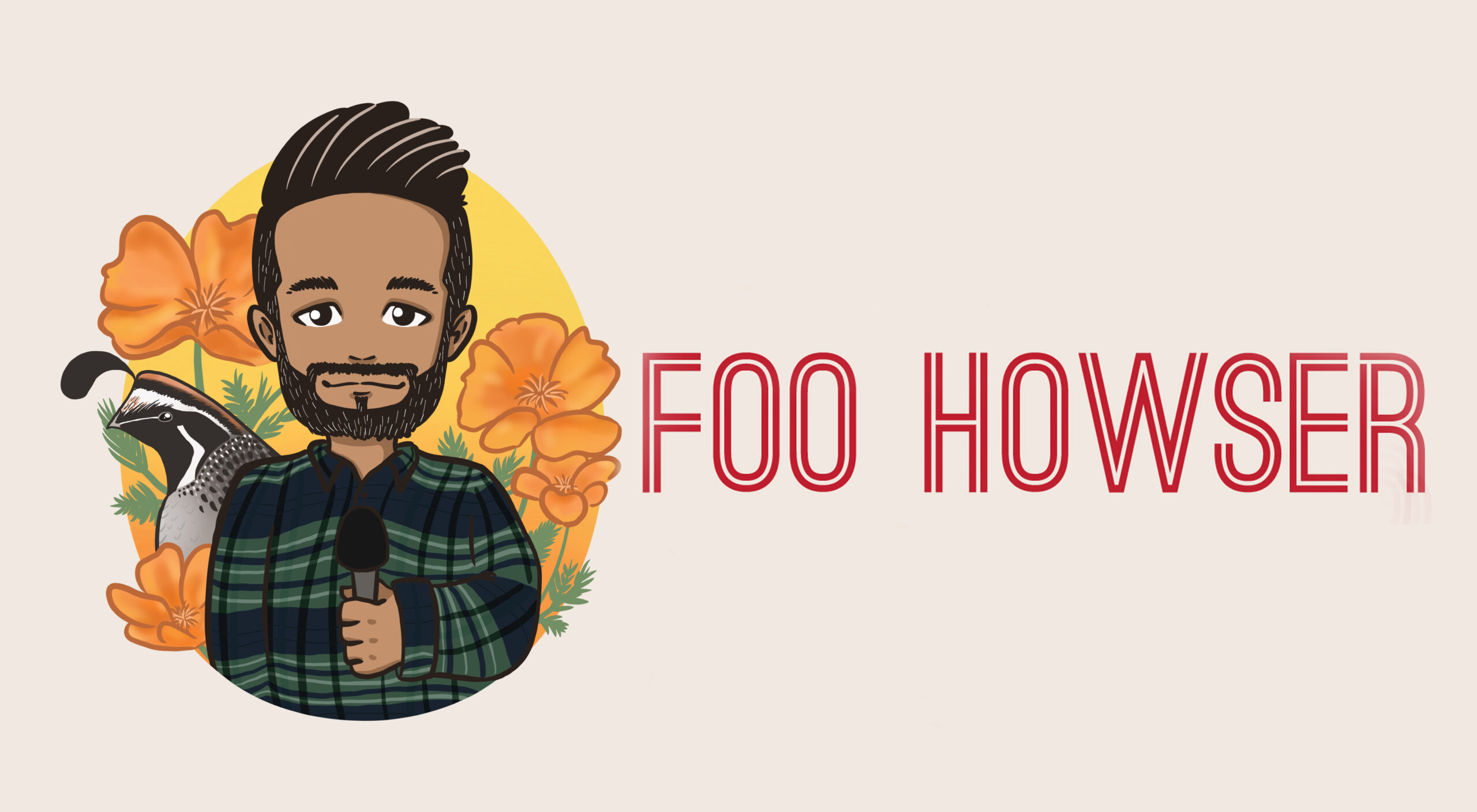Boyle Heights is a 6 1/2 square mile neighborhood just east of the L.A. River and has a very rich and diverse history. However, for this trip, I decided to focus on just one aspect of that history history—food.
I explored the history behind 2 restaurants and 2 food brands and left with a greater appreciation of the neighborhood and a full belly.
The first stop is Al & Bea’s, a small shack-like building sitting in front of a two-story house that’s been serving up some of the best bean and cheese burritos in L.A. for almost 60 years.
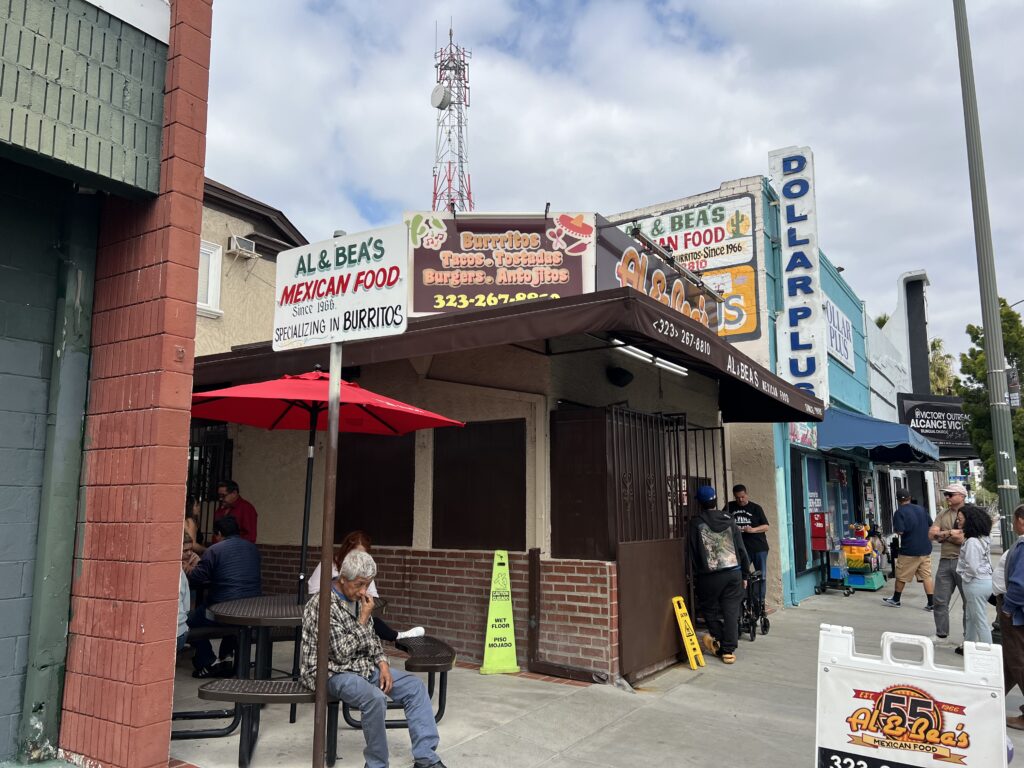
The small building had been a shed in front of the house owned by the Carreon family. In 1959 they were approached by 2 men with a proposition to open a restaurant in that space. However, that restaurant was short-lived, closing after only 7 years. However, the family’s 17 year old son Albert and his wife Beatrice decided to reopen it.
On November 15, 1966, Al & Bea’s opened its doors for the first time, selling burritos for just 18 cents. They opened with the dream of bringing Bea’s homemade recipes to a community with a high demand for good Mexican food.
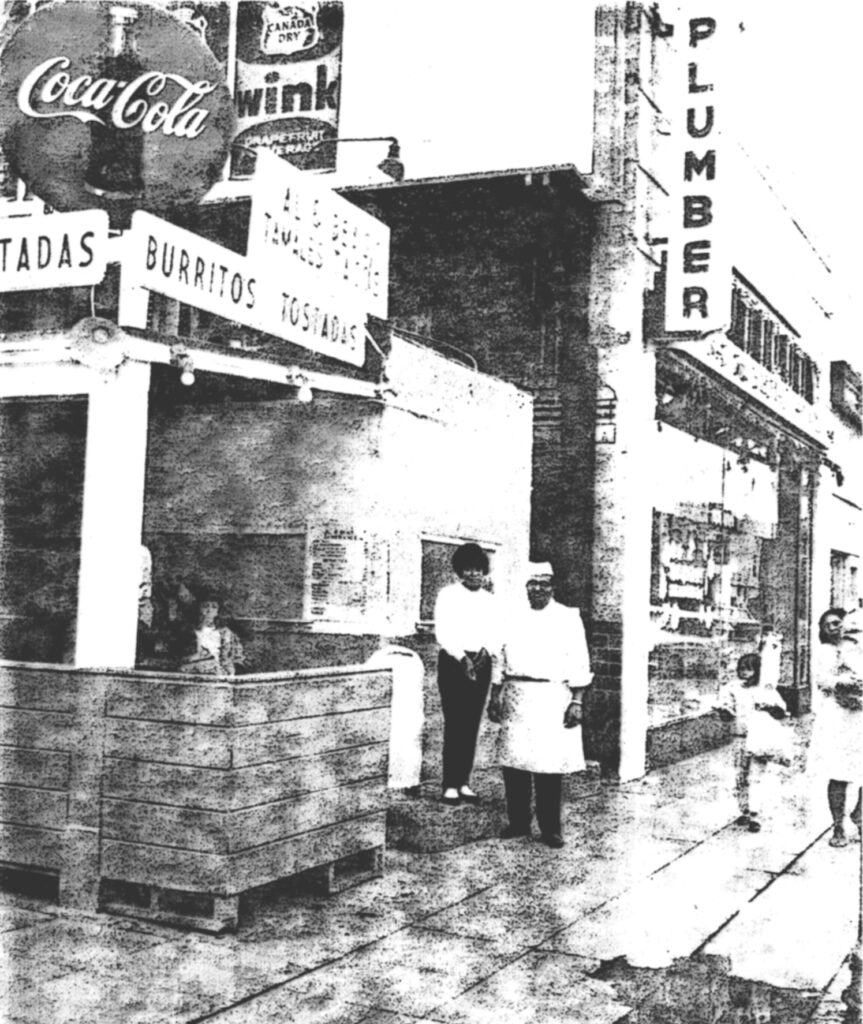
The restaurant quickly gained a reputation for Bea’s excellent cooking skills. Especially her slow-cooked refried beans that cooked for 20 hours to 24 hours. The restaurant soon became a favorite lunch time spot for people to eat.
Over the decades, the restaurant has been recognized for having the best burritos in L.A. by publications like LA Weekly in 2010 and Sunset Magazine in 2014.
Al and Bea’s is currently run by Albert Carreon, grandson of Al and Bea, and he’s dedicated to keeping his grandparents’ legacy of providing delicious homemade recipes to the new generation of customers that are now discovering Al and Bea’s.
One bite of their bean and cheese burrito and it’s easy to see why generations of customers keep coming back to Al & Bea’s.
The second stop brings us to is 1st street, because along this street the oldest continuously operating Mexican food brand in the country had its first factory and it’s one you’ve probably never heard of, the XLNT Tamale Company.
According to Gustavo Arellano in his outstanding book, “Taco USA,” Tamales were the first street food in L.A. as far back as the 1870s. Tamaleros could be found downtown with their tamal carts or wagons, ready to serve customers from the nearby saloons.
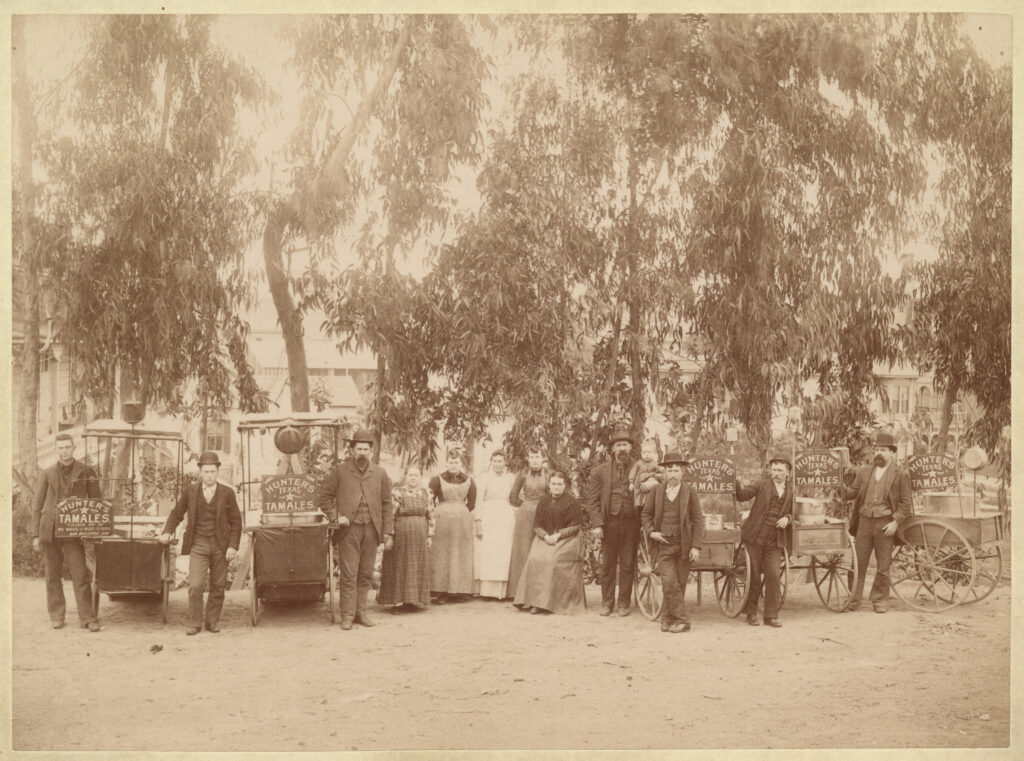
One of those tamaleros offerings were so good, that they started a company in 1894 called the “XLNT Tamale Company” and soon opened a factory in Boyle Heights to meet demand. The company was eventually taken over by a worker, Charles Crawford, who placed ads in newspapers claiming XLNT Tamales were the “best on earth.”

The company would deliver tamales all over Southern California in a horse drawn carriage, but by 1915 they had modernized their fleet by adding motorized tamale wagons.
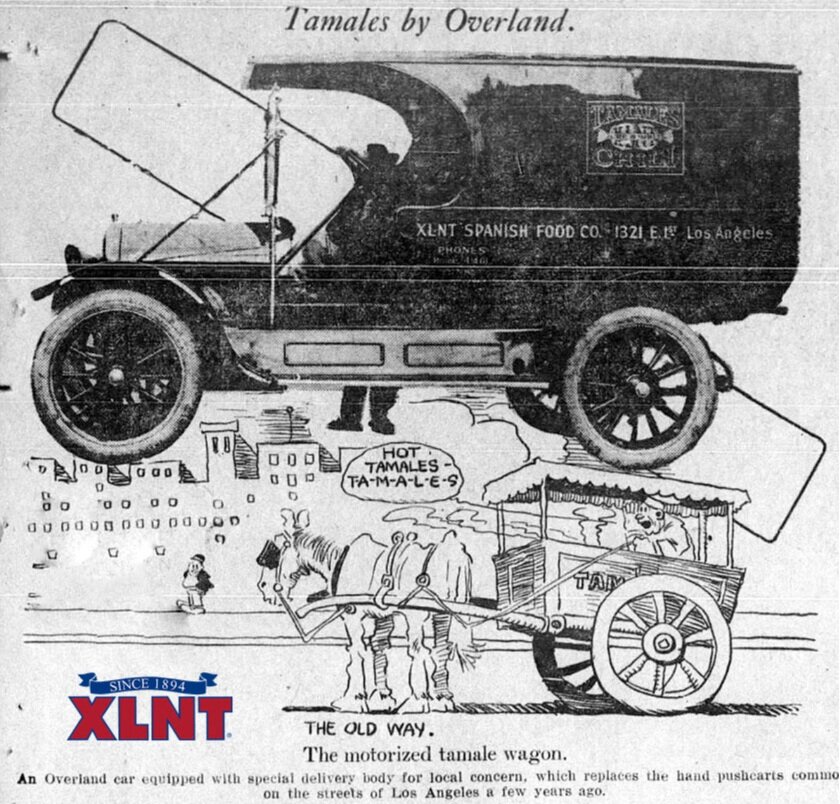
According to a column by Gustavo Arellano in the L.A. Times, Charles Crawford and his brothers grew XLNT into a multimillion-dollar company that eventually produced more than 60 items including frozen dinners, mayonnaise and even pizza.
XLNT was eventually bought by another long-established Southern California Tamale Company, Alex Foods, which started as the Alex Tamale Company in 1906 in Anaheim. Alex Foods sold products under the Alex-XLNT brand and at its height, was making more than 20 million tamales a year.
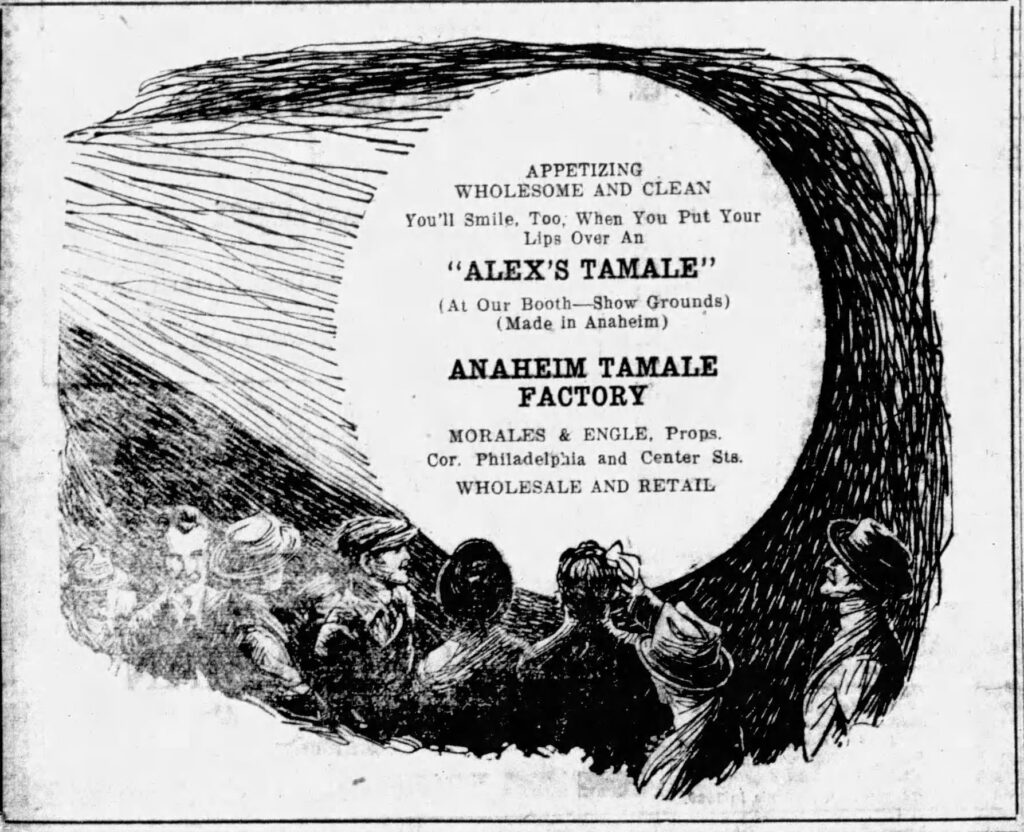
However, as consumer tastes changed and demand for more “authentic” tamales grew, the company renamed itself Don Miguel Mexican Foods and shifted focus onto other products. Don Miguel was bought by an equity firm in 2006 who chose not to acquire the XLNT brand, leaving it to the grandson of the founder of Alex Foods.
In 2010 Morales sold the XLNT brand to Vincent Passanisi, the president of Santa Fe Importers, an Italian-American deli and packer in Long Beach. The company makes about 1.5 million tamales a year, far below what XLNT made in its heyday, but the brand is profitable, they’re sold in grocery stores all over Southern California and they’re shipped all over the country to eager consumers who grew up eating XLNT Tamales.
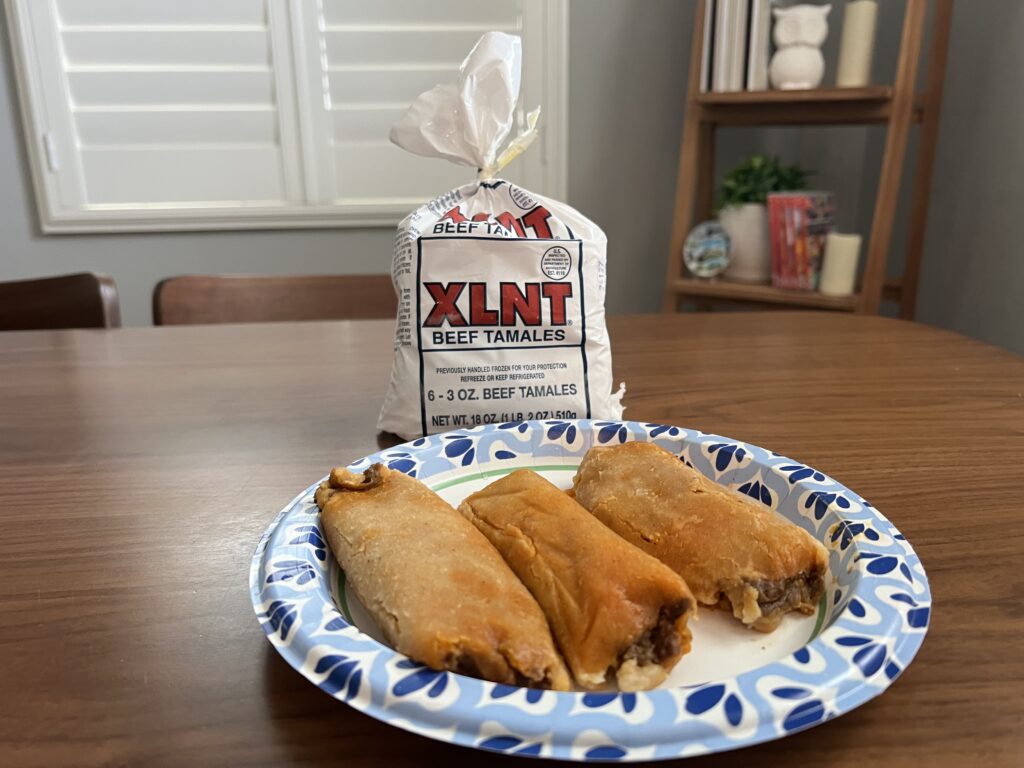
These are obviously not my mom’s tamales, but I’m glad that XLNT is still going strong after 130 years and that I get the chance to taste this little bit of history.
Our third stop is Mission Road where Walker Foods makes one of the go-to pantry items of many Mexican-American families in Southern California, El Pato Salsa.
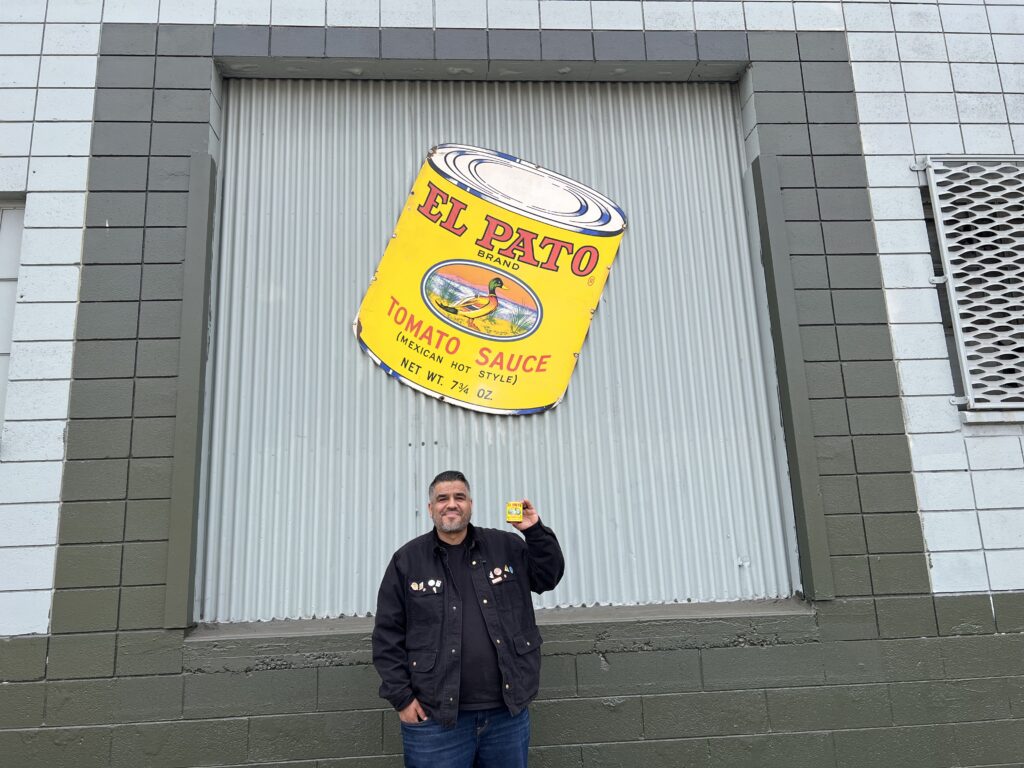
In 1904 James Walker and his wife purchased a building to start Walker Manufacturing and specialize in Mexican Food items. The company was officially founded in 1914 and production on their famous El Pato Salsa started in 1920, making them the 1st company to produce salsa in the United States.
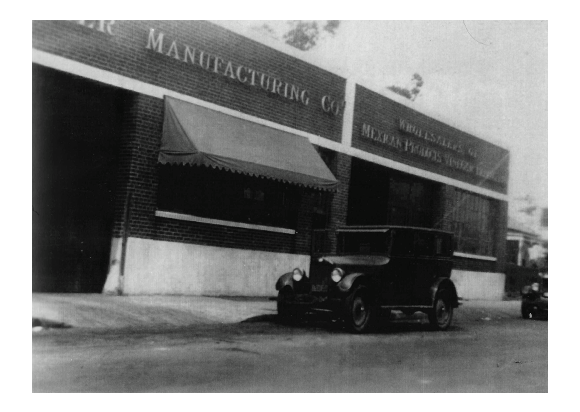
Photo Credit: Walker Foods.
In the 1940s Eldest son James took over Walker Manufacturing while his brother Robert opened his own company called “Walker Products” to make distilled vinegar and mustard. One of his first customers was a little hamburger stand out in Baldwin Park called In-N-Out.
In 1999 Robert Walker Jr. merged both companies into one and soon after expanded the line of products to include jalapeño and enchilada salsas.
Today, Walker Foods continues to thrive, doubling their vinegar production, largely in part to becoming the supplier for all McDonald’s West of the Mississippi under their Golden State brand, they still supply mustard for those animal-style double-doubles, and they provide jalapeños and yellow peppers to various restaurants. But the lifeblood of the company is still the yellow can.
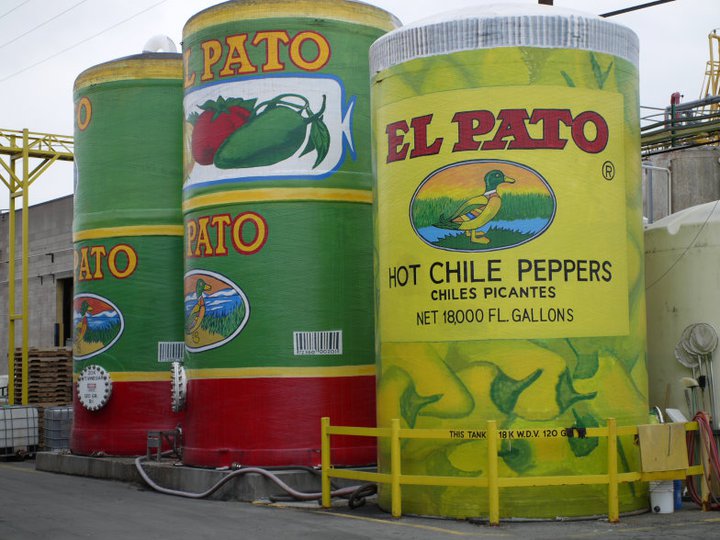
Photo Credit: Walker Foods.
Walker Food products like their mustard and El Paso Salsa have become such an integral part of our lives here in Southern California without us even knowing it, and I hope they continue going to thrive for many years to come.
The last stop on our Boyle Heights food history tour is on Soto Street at Pioneer Chicken. This is only one of two remaining locations of a chicken chain that once had 270 restaurants on the West Coast.
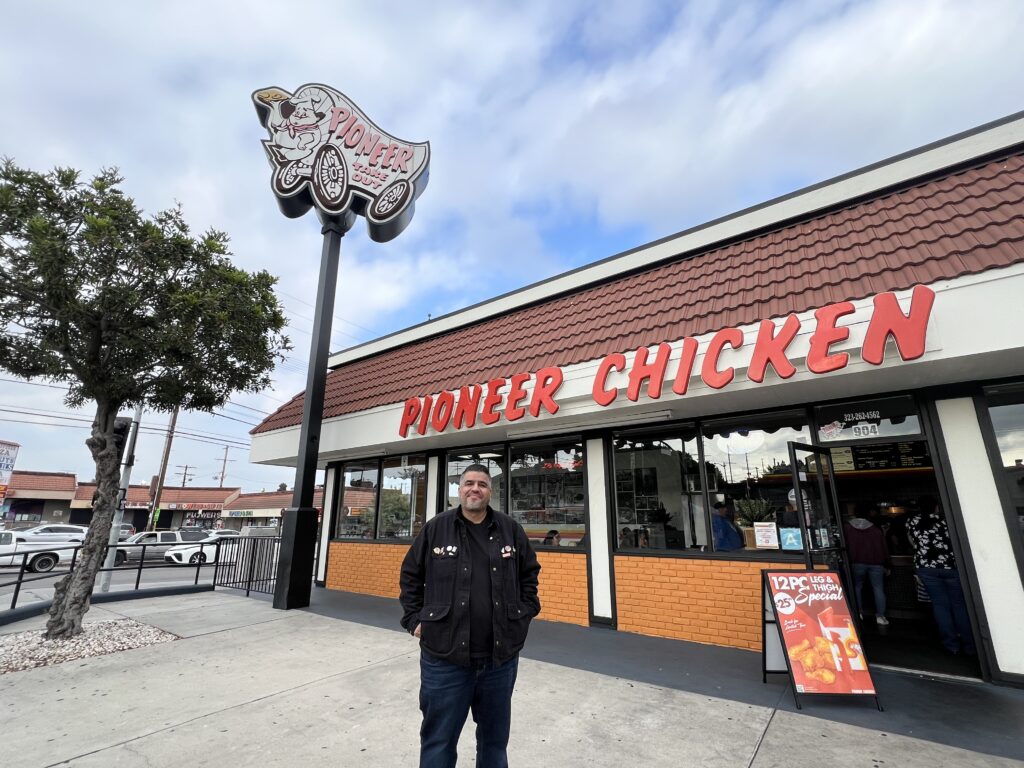
H.R. “Rick” Kaufman was in his early twenties when he started working at the Hollywood Ranch Market. He was in charge of the barbecued chicken, where he learned how to manage the chicken counter of the busy market. He was fired after 6 months for allegedly giving away free food to his father.
He vowed to one day open up his own chicken place across the street from the Ranch Market to show them how he thought chicken should be prepared.
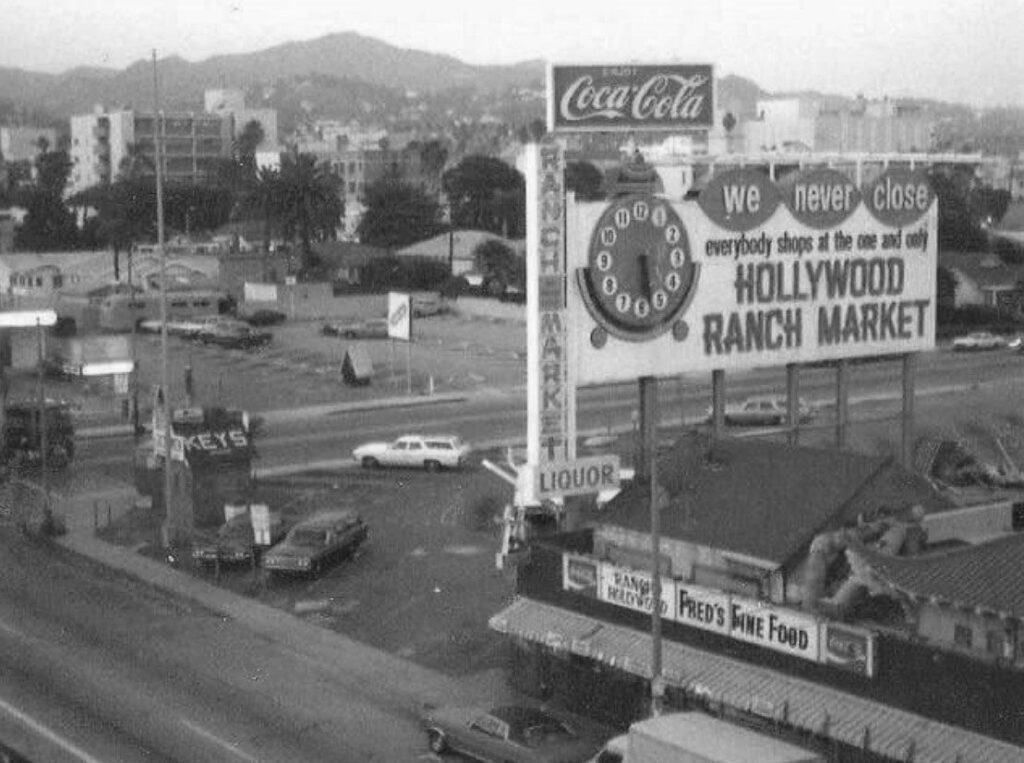
Photo Credit: Pioneer Chicken.
Kaufman went on a mission to learn as much as he could from different fast-food professionals, but was told he was crazy when he said he didn’t want to sell tacos, hamburgers, or hot dogs. Kaufman didn’t end up opening his chicken place across from the Ranch Market like he’d promised, but did open his first Pioneer Take Out restaurant in 1961 next to the Pioneer Market in Echo Park.
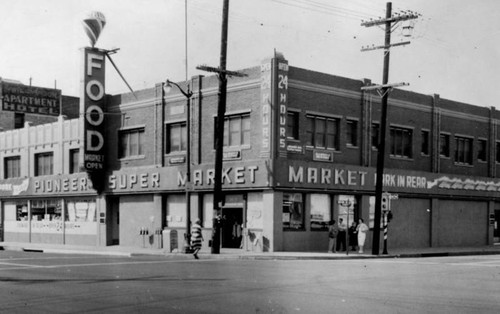
Photo Credit: Pioneer Chicken.
Kaufman’s process of dipping chicken in a wet batter and deep-frying until crisp gave his chicken an orange hue with a tempura-like coating that made a loud crunch. People absolutely loved it and Kaufman soon developed a franchise system and opened stores around all over Southern California and later expanded into Northern California, Arizona, Nevada, and Hawaii.
In the 1970s Pioneer’s biggest competitor was Kentucky Fried Chicken, who only had takeout locations at the time, so Kauffman decided to add dining rooms to his restaurants to further set them apart from KFC.
In 1977, Pioneer competed in the California State Fair and won medals not only for their chicken, but for a new orange drink that Pioneer created, called Orange Whip that was featured in all of their restaurants.
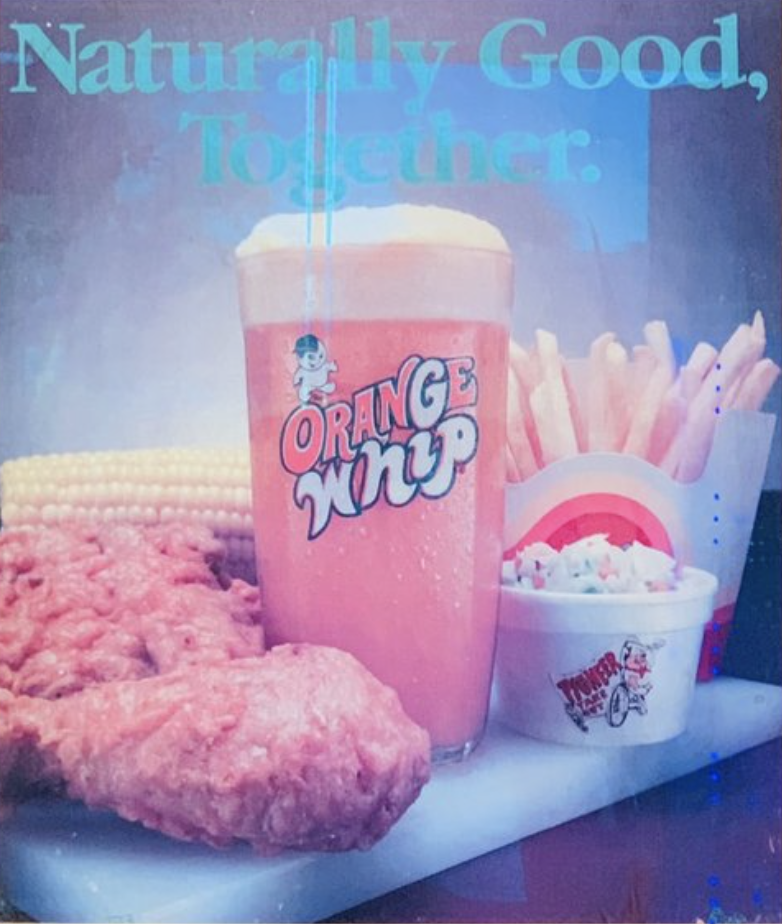
Photo Credit: Pioneer Chicken.
The popularity of Ronald McDonald inspired Pioneer’s own mascot, Pioneer Pete, a chef holding a cooked chicken while driving a stagecoach wagon. He soon appeared on all the stores’ signage and even had his own comic book.
Pioneer was very successful and it made Kaufman a very rich man, so rich that he purchased the entire town of Blue Jay with plans for a development that included a convention center and condos, which garnered pushback from the residents of the quiet mountain town.
This venture as well as investments in other businesses that took his focus away from Pioneer led to many problems. Sales dropped for the first time in 1985 and Kauffman began scaling down operations, closing locations, and reducedthe number of company owned stores down in an effort to stay profitable, but it wasn’t enough. In 1987 county marshals arrived at company owned locations and emptied the registers to pay unpaid invoices and a few weeks later the IRS took legal steps to collect overdue taxes. Pioneer was ordered to stop selling franchises until it could prove it was financially sound. Dozens of franchisees sued, claiming they’d bought into the company on the basis of misleading information.
Kauffman searched for a buyer for the company, but the financial troubles, lawsuit, and drop in value of the brand made it difficult to find one and he filed for Bankruptcy in 1988. In 1993, the parent company of Popeye’s purchased Pioneer in an auction, converting most of the locations to Popeye’s, something that a lot of franchisees welcomed. This left only two locations remaining, one in Bell Gardens and the one in Boyle Heights.
Pioneer has seen a recent resurgence on social media thanks to the grandchildren of the Boyle Heights franchisee, Val and Ernesto Aguirre. Their grandfather retired in 2021 and turned over operations to Val and Ernesto’s parents. The grand kids launched the social media accounts for Pioneer and soon after amassed thousands of followers on TikTok and Instagram. They’ve leaned into the history and nostalgia factor of the brand, bringing back the original boxes and packages form the 80s, but they’ve also managed to appeal to younger generations thanks to their social media skills. They’ve been so successful that they’re even planning on opening a new location somewhere in L.A. County in the next year and a half, this is the type of comeback you love to see.

Photo Credit: The Talk.
Pioneer Chicken was one of my favorite places to eat as a kid and I’m glad to see that L.A.’s original fried chicken is still going strong.
References:
“Tradition, Consistency Keep Customers Coming Back to Al & Bea’s” by Dania Alejandres, Boyle Heights Beat. July 30, 2022.
“Nostalgia is Key Ingredient in XLNT’s Legacy Tamales” by Gustavo Arellano, The L.A. Times. Dec. 23, 2019.
“Taco USA: How Mexican Food Conquered America” by Gustavo Arellano, Pg. 55-56.
“El Pat0 is L.A.’s 115-Year-Old Native Hot Sauce King” by Farley Elliot, EaterLA. Feb. 2, 2021.
“The History Behind El Pato Hot Sauce” by El Pato Hot Sauce YouTube Channel. Dec. 15, 2017.
“Made in California” by George Gearey, Pg. 225-227.
“Meet the Sister and Brother Reviving California’s Most Iconic Fried Chicken Chain” by Karen Palmer, SF Gate. Jan 19, 2024.

